Sorry, nothing in cart.
Gabantin 400mg
In Stock
Available Options
| pack size | Price | Quantity | |
|---|---|---|---|
| 100 Capsules | $85.00 | ||
| 200 Capsules | $150.00 | ||
| 300 Capsules | $210.00 | ||
| 50 Capsules | $50.00 |
Quick Overview
| Brand Name: | Gabantin 400 |
| Generic Name: | Gabapentin 400 |
| Active Ingredient: | Gabapentin |
| Manufacturer: | Sun Pharmaceutical Industries Ltd |
| Drug Class: | Anticonvulsants |
| Strength: | 400 mg |
| SKU: | GBNT400 |
| Packaging: | 10 Tablet in 1 Strip |
| Treatment: | Peripheral Neuropathic Pain |
| Time Duration: | Time to work 30 to 60 minutes |
| Price: | $45 to $205 |
Product Description
Gabantin 400mg is a prescription medication containing gabapentin, a gamma-aminobutyric acid (GABA) analogue widely used to treat neuropathic pain and epilepsy. This higher-dose formulation is designed to simplify dosing regimens for patients requiring prolonged or intensive therapy. Unlike its 300mg counterpart, Gabantin 400mg reduces the pill burden for individuals managing chronic conditions, offering improved adherence and convenience. This article provides a detailed exploration of Gabantin 400mg, including its pharmacology, clinical applications, safety profile, and patient management strategies.
Pharmacological Profile of Gabantin 400mg
Active Ingredient: Gabapentin
Gabapentin is a synthetic compound structurally related to GABA, though it does not directly bind to GABA receptors. Its mechanism of action involves binding to the α2δ subunit of voltage-gated calcium channels in the central nervous system (CNS), modulating neurotransmitter release and dampening hyperexcitability in neurons.
Key Pharmacokinetic Properties
- Absorption: Gabapentin is absorbed in the small intestine via a saturable L-amino acid transport system. Bioavailability decreases with higher doses (e.g., ~60% for 400mg vs. ~80% for 100mg).
- Distribution: Minimal protein binding (<3%), allowing wide distribution across tissues, including the CNS.
- Metabolism: Not metabolized by the liver; excreted unchanged in urine.
- Half-Life: 5–7 hours in adults with normal renal function.
- Elimination: Primarily renal (creatinine clearance-dependent).
Formulation Advantages
The 400mg tablet provides a middle-ground dosage option, bridging lower strengths (100mg, 300mg) and higher doses (600mg, 800mg). It is particularly useful for patients stabilized on gabapentin therapy who require fewer daily tablets.
Clinical Applications
1. Epilepsy Management
Gabantin 400mg is approved as an adjunctive therapy for partial-onset seizures with or without secondary generalization in adults and pediatric patients (≥3 years).
- Efficacy: Clinical trials demonstrate a 10–15% reduction in seizure frequency when combined with other antiepileptics like carbamazepine or valproate.
- Dosing in Epilepsy:
- Adults: Initial dose of 300mg/day, titrated by 300mg increments every 3–7 days to a maintenance dose of 900–3600mg/day (divided into 3 doses).
- Pediatrics: 10–15mg/kg/day, adjusted based on response and tolerability.
2. Neuropathic Pain Syndromes
Gabantin 400mg is FDA-approved for:
- Postherpetic Neuralgia (PHN): Pain persisting after shingles (herpes zoster) resolves.
- Diabetic Peripheral Neuropathy (DPN): Painful symptoms in diabetic patients, such as burning, tingling, or numbness.
Off-Label Uses Supported by Evidence:
- Chronic Sciatica: Reduces radicular pain in some patients.
- Fibromyalgia: Alleviates widespread pain and fatigue (though pregabalin is more commonly prescribed).
- Chemotherapy-Induced Neuropathy: Mitigates neurotoxic effects of agents like paclitaxel or oxaliplatin.
3. Psychiatric and Other Disorders
- Restless Legs Syndrome (RLS): Gabantin 400mg at bedtime reduces sensory discomfort and improves sleep quality.
- Generalized Anxiety Disorder (GAD): Used off-label as an adjunct to SSRIs/SNRIs.
- Migraine Prophylaxis: Reduces migraine frequency by ~50% in some studies.
Dosage and Administration Guidelines
Standard Dosing for Adults
- Neuropathic Pain:
- Day 1: 300mg once daily.
- Day 2: 300mg twice daily.
- Day 3: 300mg three times daily.
- Day 4 onward: Increase to 400mg three times daily (1200mg/day) as tolerated. Maximum dose: 3600mg/day.
- Epilepsy: Similar titration, with maintenance doses typically ranging from 900–2400mg/day.
Special Populations
- Renal Impairment:
- Creatinine Clearance (CrCl) 30–59 mL/min: Max 600mg twice daily.
- CrCl 15–29 mL/min: Max 300mg twice daily.
- CrCl <15 mL/min or Dialysis: 100–300mg post-dialysis.
- Elderly Patients: Start at lower doses (100–300mg/day) to minimize dizziness and fall risks.
Administration Tips
- Timing: Space doses evenly (e.g., 8-hour intervals for TID dosing).
- Food: May be taken with or without food, but high-fat meals delay absorption.
- Splitting Tablets: Not recommended, as gabapentin tablets are not scored.
Adverse Effects and Safety Considerations
Common Side Effects (≥10% of Patients)
- CNS Effects: Drowsiness (19%), dizziness (17%), fatigue (11%).
- Gastrointestinal: Dry mouth, constipation, nausea.
- Peripheral Edema: Swelling in limbs due to fluid retention (8%).
- Weight Gain: Gradual increase (2–3 kg over 6 months) due to metabolic changes.
Serious Adverse Reactions
- Suicidal Ideation: FDA black-box warning for increased risk in epilepsy patients (0.43% vs. 0.22% placebo).
- Respiratory Depression: Rare but significant when combined with opioids.
- Hypersensitivity: Angioedema, Stevens-Johnson syndrome (rare).
Long-Term Safety
- Dependence and Withdrawal: Abrupt discontinuation may trigger withdrawal symptoms (anxiety, insomnia, nausea). Taper over ≥1 week.
- Bone Health: Long-term use associated with reduced bone mineral density (monitor in at-risk patients).
Drug Interactions
Gabantin 400mg has few pharmacokinetic interactions due to lack of hepatic metabolism. Notable considerations:
- Opioids (e.g., morphine, oxycodone): Synergistic CNS depression; monitor for respiratory compromise.
- Antacids (e.g., aluminum hydroxide): Reduce gabapentin absorption by 20%. Administer 2 hours apart.
- Alcohol: Exacerbates sedation and dizziness.
Patient Counseling and Monitoring
Key Counseling Points
- Avoid activities requiring alertness (e.g., driving) until tolerance to sedation develops.
- Report mood changes, suicidal thoughts, or unusual swelling immediately.
- Do not discontinue abruptly—follow a physician-guided tapering schedule.
Monitoring Parameters
- Efficacy: Seizure frequency, pain scores (e.g., Visual Analog Scale).
- Safety: Renal function (serum creatinine), mental health status, weight trends.
Comparison to Alternatives
Gabantin vs. Pregabalin
- Efficacy: Pregabalin has higher bioavailability and faster onset but similar efficacy.
- Cost: Gabantin (gabapentin) is often more affordable as a generic.
- Dosing: Pregabalin requires twice-daily dosing vs. gabapentin’s TID regimen.
Gabantin vs. Amitriptyline
- Mechanism: Amitriptyline (a tricyclic antidepressant) targets norepinephrine/serotonin reuptake.
- Side Effects: Amitriptyline has anticholinergic effects (dry mouth, constipation) and higher cardiac risks.
Frequently Asked Questions (FAQs)
1. Can Gabantin 400mg Be Used for Anxiety?
While not FDA-approved, gabapentin is sometimes prescribed off-label for anxiety due to its calming effects. Evidence is mixed, and it is not a first-line option.
2. How Long Can I Safely Take Gabantin 400mg?
Long-term use is acceptable under medical supervision. Regular monitoring for side effects (e.g., renal function, mood) is essential.
3. Does Gabantin Cause Memory Loss?
Cognitive effects (e.g., brain fog) are rare but possible. Report concerns to your healthcare provider.
4. Is Gabantin Safe During Pregnancy?
Limited data exist. Gabapentin crosses the placenta—use only if benefits outweigh risks (e.g., uncontrolled seizures).
Conclusion
Gabantin 400mg is a versatile therapeutic option for epilepsy and neuropathic pain, offering a balance of efficacy and tolerability. Its role in reducing pill burden and simplifying regimens makes it a practical choice for chronic conditions. However, its use requires careful patient selection, dose titration, and monitoring to mitigate risks such as sedation, dependence, and renal complications. Patients and providers must collaborate to optimize outcomes, ensuring that treatment aligns with individual health profiles and lifestyle needs.
This content is for educational purposes only and does not replace professional medical advice. Consult a healthcare provider for personalized recommendations.
Additional information
| pack size | 50 Capsules, 100 Capsules, 200 Capsules, 300 Capsules |
|---|
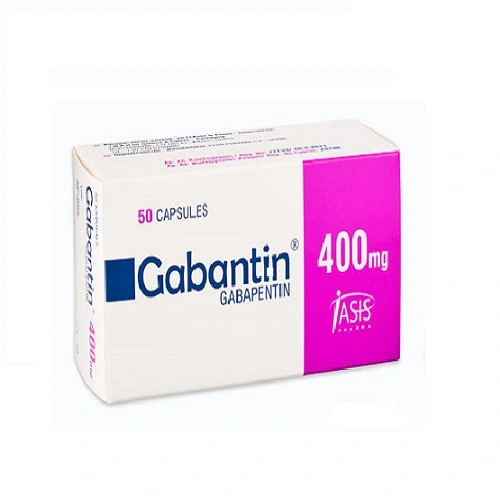

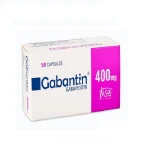
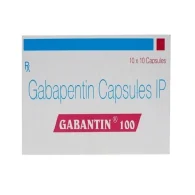
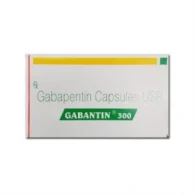
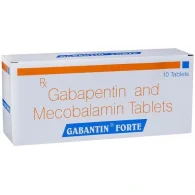

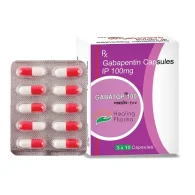
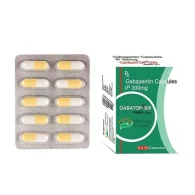
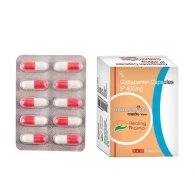

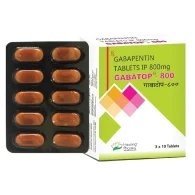
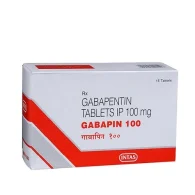
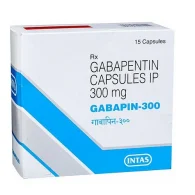

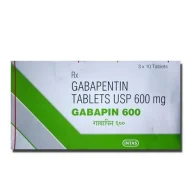
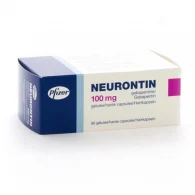
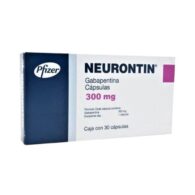
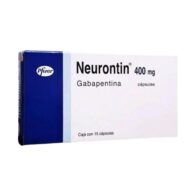
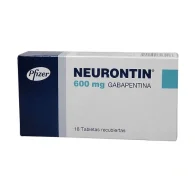

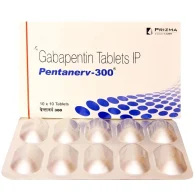
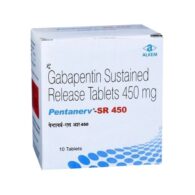
Reviews
There are no reviews yet.